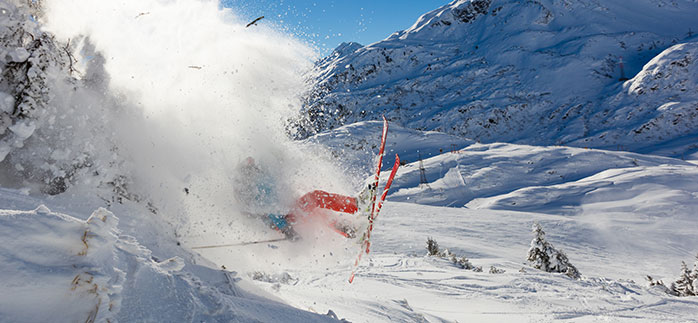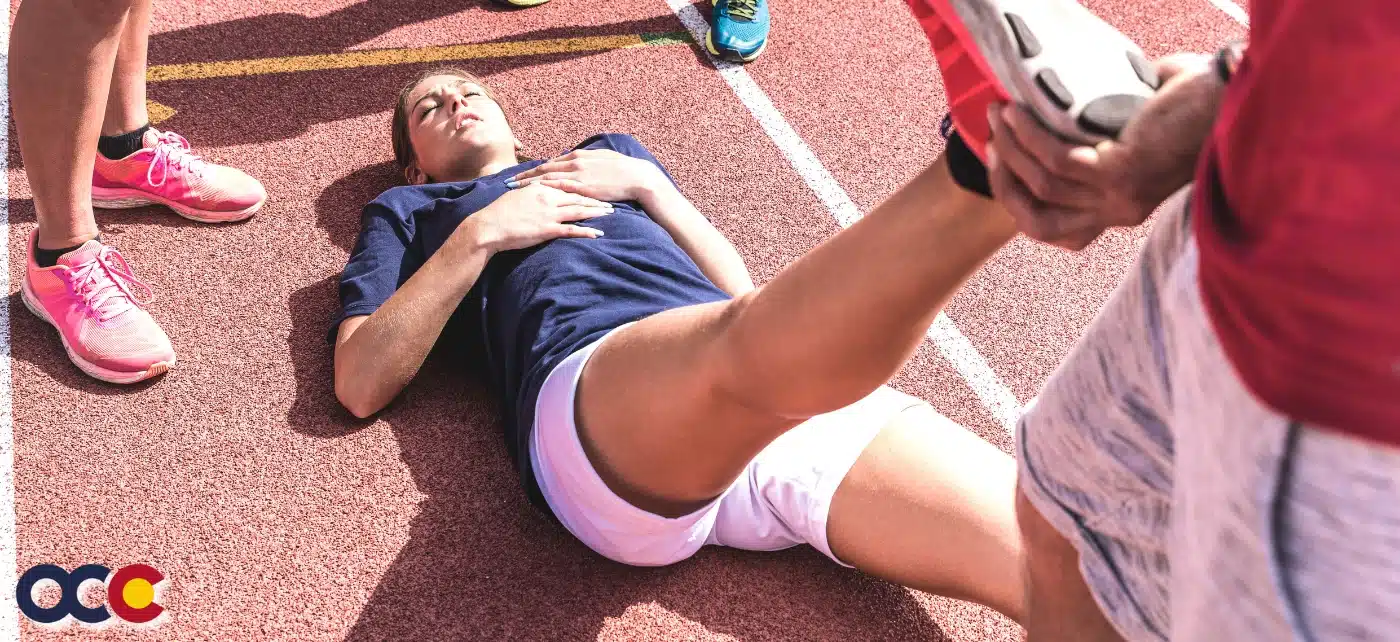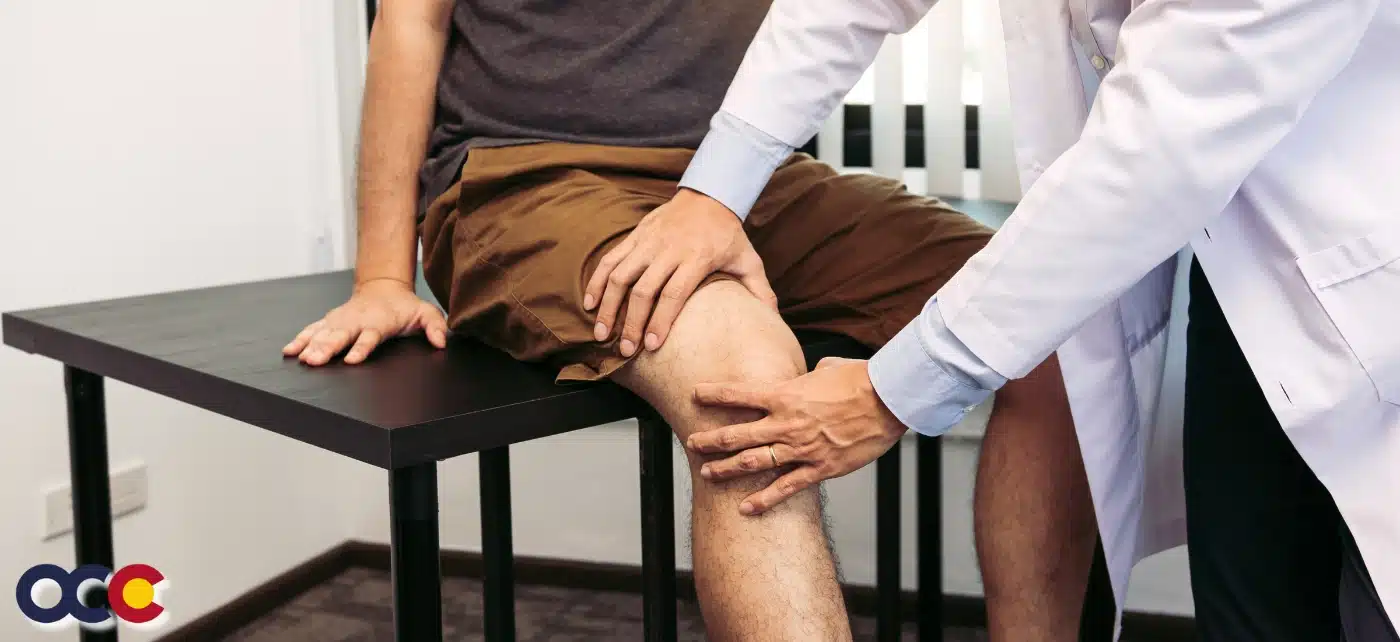Avid Colorado skiers know that it’s been a good year so far, with snow levels pacing well ahead of last year. This is great news for locals who want to get in as many days as possible, but bad news if you hurt your knee skiing all that great powder. When people overdo it or get into terrain that is beyond their ability, knee injuries are common. If you hurt your knee skiing, there are several things you should know to minimize further damage and recover more quickly.
I hurt my knee skiing. Do I need to go to urgent care?
Thankfully, most knee injuries are do not require an expensive trip to the ER or urgent care and treatment can start at home as long as you see an orthopedist relatively quickly following your injury. Read on to learn about three of the most common skiing knee injuries, and how to prevent and treat them.
A) Knee Sprains – Knee sprains account for about 30 percent of all skiing injuries and are becoming more common than ever. Strains occur when one or more ligaments is stretched or torn. Skiing can naturally create circumstances where your knee is twisted or forced out of its normal position. If you have pain or swelling but still have range of motion and stability, you may have a knee sprain.
Sprains require RICE: Rest, Ice, Compression and Elevation, and then a trip to your orthopedic specialist. Your doctor will evaluate your knee to confirm it is indeed a sprain and recommend the right treatment to maximize the healing process. But be careful not to ice too long and avoid putting ice directly on your skin. A good rule of thumb is twenty minutes on, forty minutes off. Too much ice can cause nerve damage and frost bite.
B) Torn MCL – More severe than a sprain, a medial collateral ligament (MCL) tear is actually the most common skiing knee injury. The reason for this is twofold: first, beginner and intermediate skiers far outnumber advanced skiers and MCL tears are most likely to occur in less-skilled skiers. Second, the MCL becomes strained or torn when the knees are turned in, which is common when you go into a snowplow (or “pizza”) position.
The symptoms of an MCL tear are often similar to that of a sprain, so it’s important to see an orthopedic expert to ensure you are correctly diagnosed. Some MCL patients also experience a catching or locking feeling or recognize marked instability as well.
If you do manage to tear your MCL, the good news is that most MCL tears can often be treated without surgery. Treatment typically includes the RICE formula, physical therapy to maintain range of motion and build strength, plus the use of a protective brace as you get back into physical activity.
C) A torn Anterior Cruciate Ligament (ACL) is also one of the most common skiing knee injuries. ACL tears are usually considered more severe because they frequently occur in conjunction with damage to another part of the knee. An ACL tear is often caused by a sudden stop or change in direction (think crowds on the slopes, moguls, catching an edge, or navigating an unexpected turn).
While treatment often involves surgery, today’s technology is much less invasive than it was years ago, so you don’t have to worry about a giant “zipper” scar up the front of your knee and most patients begin physical therapy days after surgery. A good orthopedic surgeon can help patients get back to being active quickly with minimally invasive techniques and a comprehensive rehabilitation plan.
A fresh powder day is certainly tempting, but you don’t want it to be your last of the season! You can minimize your chances of these common skiing knee injuries by remembering a few key points:
- Always ski within your ability and ensure that you keep yourself balanced as you go downhill. Keeping your weight forward (but not too far forward) with your hips and knees bent will help you maintain a balanced position. Leaning back forces your feet forward in your boots (ouch) and ensures you’ll be on your rear end more often than you’d like.
- Take a break when you need to. It’s easy to get overly excited when there’s such great snow but remember if this is your first time up for the season (or the decade), take it slow! Skiing is a workout, and if you haven’t been doing many (or any) leg exercises, even a few runs can take their toll quickly. Don’t overdo it.
- Get in ski shape. If you have time to start conditioning before you go, do it! Even just a few weeks of leg and core exercises will make a difference and help minimize your chance of common skiing knee injuries.
Even with all these precautions, accidents do happen, and knee injuries are quite common. If you are reading this because you think you may have injured your knee – we can help!
You know your body best, so never avoid emergency treatment if you think you need it. The good news is that many people are able to apply ice, elevate the knee, and use crutches to get around until their appointment. We can usually see you within 24 hours. Schedule an appointment today with one of our orthopedic knee specialists to get back on your feet and back on the slopes!

















